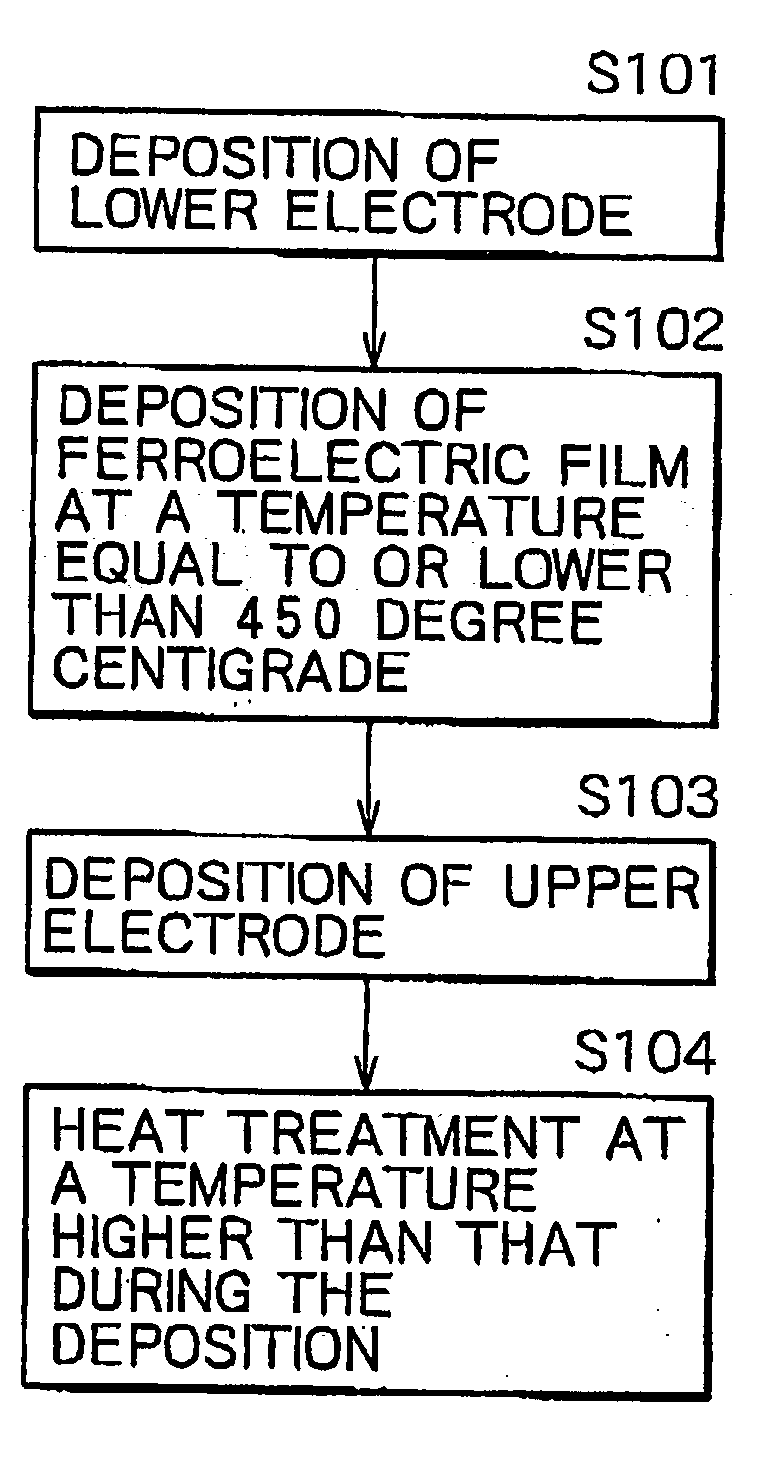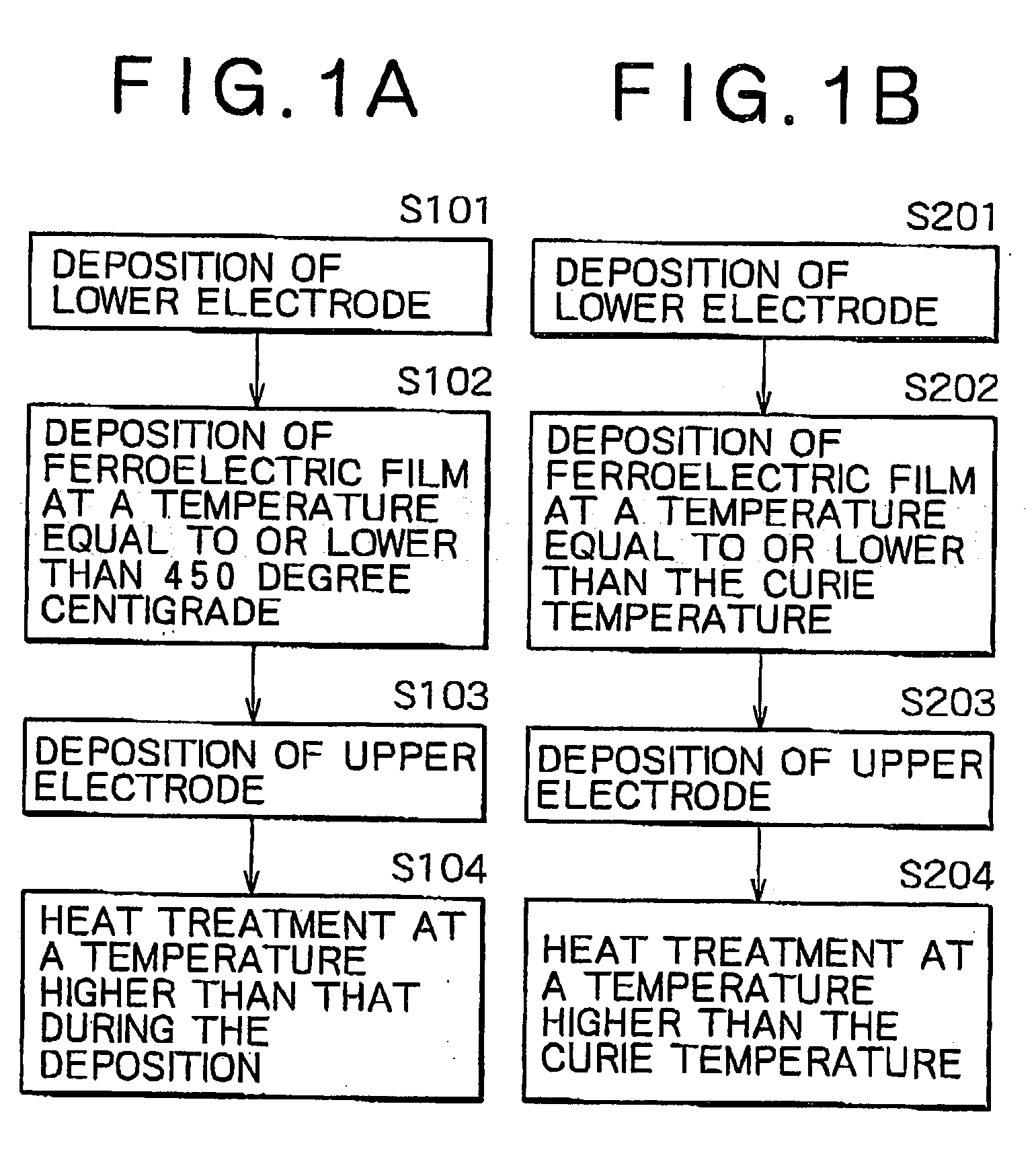Method of fabricating semiconductor device
a semiconductor device and manufacturing method technology, applied in the direction of polycrystalline material growth, crystal growth process, protective fluid, etc., can solve the problems of high temperature, increase in leakage current and breakdown voltage, and difficulty in applying deposition technology to the actual process of fabricating a semiconductor device at such high temperatures
- Summary
- Abstract
- Description
- Claims
- Application Information
AI Technical Summary
Benefits of technology
Problems solved by technology
Method used
Image
Examples
Embodiment Construction
[0032] In the next place, an embodiment of the invention will be explained with reference to the drawings. The embodiment is an example in which the invention is applied to a so-called shadow RAM in which a ferroelectric capacitor is connected to an SRAM constituted of a MOS transistor. In the shadow RAM, as a circuit diagram thereof is shown in, for instance, FIG. 3, each of a pair of cascade connected N channel MOS transistors Q0, Q1 and a pair of cascade connected P channel MOS transistors Q2, Q3 is connected between a power supply VCC and a GND and both pairs are cross connected, to connection nodes N0, N1 thereof N channel MOS transistors Q4, Q5 are connected, respectively, and to these transistors a word line WL, bit lines BLN, BLT are connected. Furthermore, to the connection nodes N0, N1, ferroelectric capacitors F0, F1 are connected, and furthermore a plate line PL is connected thereto. Though detailed descriptions of the operation of the shadow RAM will be omitted, when po...
PUM
| Property | Measurement | Unit |
|---|---|---|
| Pressure | aaaaa | aaaaa |
| Angle | aaaaa | aaaaa |
| Angle | aaaaa | aaaaa |
Abstract
Description
Claims
Application Information
 Login to View More
Login to View More - R&D
- Intellectual Property
- Life Sciences
- Materials
- Tech Scout
- Unparalleled Data Quality
- Higher Quality Content
- 60% Fewer Hallucinations
Browse by: Latest US Patents, China's latest patents, Technical Efficacy Thesaurus, Application Domain, Technology Topic, Popular Technical Reports.
© 2025 PatSnap. All rights reserved.Legal|Privacy policy|Modern Slavery Act Transparency Statement|Sitemap|About US| Contact US: help@patsnap.com



